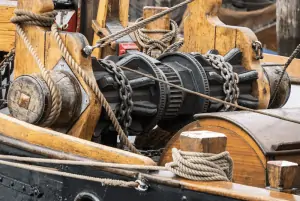Jeeps are the most suitable vehicles for off-roading. They give you the freedom of driving on rough terrains and a safe cruising experience through the wild.
But, no Jeep is perfect right out of the dealership. Some modifications are required to make it the ideal off-roading machine, where installing a winch plays a vital role.
Though it doesn’t actively contribute to your driving, no extreme off-roader should dare to go without it. It helps you get out of any emergency, such as getting out of mud or pulling your Jeep out of the river.
To know what size winch for Jeep is perfect, keep on reading our article!
How to Use a Winch on a Jeep
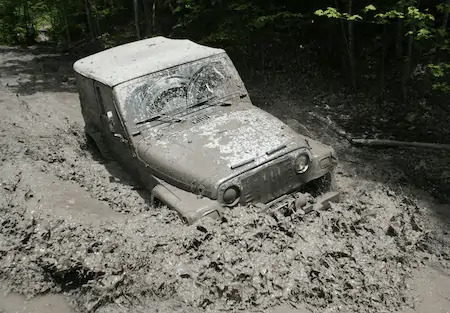
A winch is considered as an off-road modification of a Jeep. It’s a pulling device by function, which usually is mounted in the front bumper of your Jeep.
The pulling device is made with a cable and a motor that pulls the cable. The motor could be electric or hydraulic powered. Yes, the type of the motor matters on the functionality of the winch, and it can ultimately affect how your outdoor trip ends.
How is the winch used? Suppose your Jeep gets stuck in the mud and the engine is not powerful enough to drive itself through a steep curve and requires extra leverage for getting over it.
You will get the winch rope and tie it with a firm object ahead on those emergency occasions. It could be a tree or anything on which you can get enough leverage for pulling your Jeep out.
When you come back and operate the winch, it’ll retract the rope, and your Jeep will be dragged along the way. That is basically how you use a winch to get out of difficult off-road situations.
What Size Winch for Jeep: How to Choose It
Winches are very important when you are off-roading with your Jeep. But, you need to pick the right size to enjoy its privilege.
You can choose the best winch for your Jeep by considering two factors: the power, and the type of winch. We have discussed the type of inches in the next section. But in the case of power, there’s a general rule of thumb followed by all off-roaders.
The rule of thumb is to take a winch that is powerful enough to pull 1.5 times the weight of your vehicle.
So, take the gross weight of your Jeep and multiply it by 1.5. That number should be the minimum strength of your winch for the Jeep. If you have made any installation and modifications in your Jeep, you will have to factor that in as well.
Now, if you have just added a few things like an extra fuel tank and spare wheel, it shouldn’t be too difficult to guess the weight.
But, if you have replaced any internal engine parts with upgraded ones, you will have difficulties finding the weight. Our recommendation is to go to your nearest scrap station or weigh station (if you have one nearby) and get your Jeep weighed.
Take that number, and multiply it by 1.5. That will be the minimum strength your winch must be capable of pulling.
Two Major Types of Winch
As mentioned in the previous section, there are two types of winch based on its motor. If you want to factor in the rope used in a winch, you can divide them into more categories. But the rope can be changed, so it doesn’t matter much.
The motor, however, is the main component of the winch. So let’s keep the discussion about the winch motors.
#1. Electric Winches
The electric winches use electric motors, so it requires batteries for powering and pulling the rope of the winch. There are typically two types of electric winch based on the motor magnet – permanent magnet motor winch, and series-wound motor winch.
Both have their advantages and disadvantages that you need to consider before choosing one. The advantage of the permanent magnet motor is that it draws less current from your car battery. Even so, it takes a toll on the battery. The other advantage is that they are cheaper and widely available in local markets.
The disadvantage of them is they overheat, which makes them quickly depreciate and lose power. They also tend to lose control in the cold (Not recommended for winter off-roading).
Also, they are highly susceptible to impact and bump. It automatically puts the permanent magnet winch motors at the bottom of the list.
This brings us to the series-wound motor winches. They are not so susceptible to impacts which make them more reliable, and these are more powerful than their permanent magnet counterparts.
Eventually, they ensure quicker drag and heavier pull. Also, they don’t overheat and depreciate which provides a long service life.
But, on the other hand, they draw much higher power from the battery. We recommend you keep a couple of extra batteries if you are using series-wound winches. Another disadvantage of the series-wound motor is that they are expensive and hard to find in the local market.
Our recommendation would be that you should install a series-wound motor winch. We know that it’s expensive and hard to find, but the long service life and durability make it the best choice.
Also, make sure that the motor is submersible. Otherwise, they may not work if you are stuck in a watery/muddy situation.
#2. Hydraulic Winches
Your alternative to the electric winch is the hydraulic winch. They don’t run on your car’s battery, instead, they run on your car’s engine. So, as long as your car’s engine is running, the hydraulic winch will also run.
Unlike the electrical winches, this one is designed for all-day use. So, there’s no need to stop the winch for cooling. Hydraulic winches are the most reliable, and they are the most used winches in commercial runs.
However, they do come with some drawbacks. The first one is that they are complex and require expert hands for the installation. You could install an electrical winch by yourself by connecting two wires.
But in the case of a hydraulic winch, you need to tap into the battery and the power steering pump. The hydraulic pipes need to be installed very carefully with great care. Otherwise, the pressure of the pump may blow the pipe out of the joints.
Also, these winches are very expensive and not widely available. If your jeep engine is dead (which may happen in a watery situation), the winch will not work at all.
So, if you wish to install a hydraulic winch, you must carefully assess possible scenarios that may appear in your adventures and be decisive about it.
Conclusion
As we have reached an end to our discussion on what size winch for Jeep, it’s safe to say that by the size of the winch, people refer to the strength of the winch (bigger winch = more robust winching).
The strength of the winch will be 1.5 multiplied by your vehicle’s current gross weight, and the type of winch you should choose depends on your scenario.
If you plan to use it regularly, then a hydraulic winch is the perfect option. Otherwise, choose a series-wound electric winch that will serve you well.
Either way, we recommend you keep extra batteries and fuel in your car as the winch puts stress on the engine and battery the most.
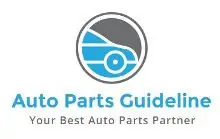
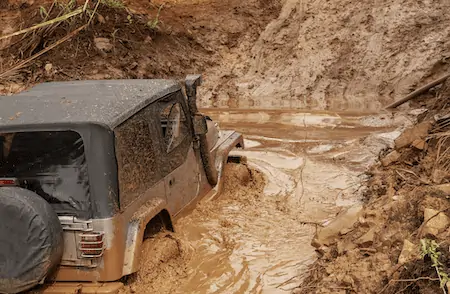

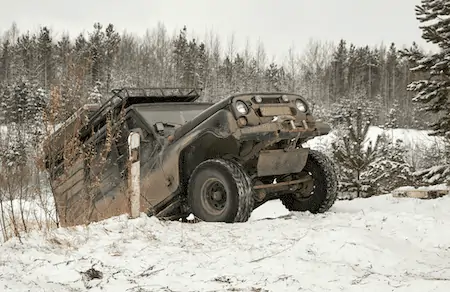
![Read more about the article How to Mount a Winch on a Truck [Absolute Step by Step Guide]](https://autopartsguideline.com/wp-content/uploads/2021/10/how-to-mount-a-winch-on-a-truck-300x190.webp)

